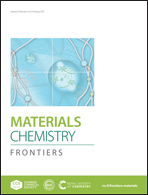Nepenthes pitcher inspired isotropic/anisotropic polymer solid–liquid composite interface: preparation, function, and application
Abstract
Inspired by the Nepenthes pitcher plant, solid–liquid composite interfaces have gained intense attention due to their unique functions of self-healing, liquid-/ice-repellency, pressure stability, controllable wettability, and so on. A variety of materials have been used to create a solid–liquid composite interface. In particular, polymers have attracted enormous interest and have been extensively studied to develop polymer-based solid–liquid composite interfaces due to their diversity, flexibility, easy design and processing, and intelligence. In this review, we mainly focus on the recent progress on solid–liquid composite interfaces prepared from polymer materials and review them from the perspective of isotropy and anisotropy. First, the design principles and preparation methods of isotropic/anisotropic polymer solid–liquid composite interfaces are summarized. Subsequently, the functions of responsive isotropic/anisotropic polymer solid–liquid composite interfaces under external stimuli, including mechanical stretching, magnetic field, temperature, electric field, photoirradiation, and photoelectric field, are discussed in detail. Furthermore, the emerging applications of isotropic/anisotropic polymer solid–liquid composite interfaces, including anti-frosting/icing, antifouling, unidirectional transport, one-way microreactors, and so on, are highlighted. Finally, the limitations and future developmental directions are briefly addressed.

- This article is part of the themed collection: 2021 Materials Chemistry Frontiers Review-type Articles


 Please wait while we load your content...
Please wait while we load your content...